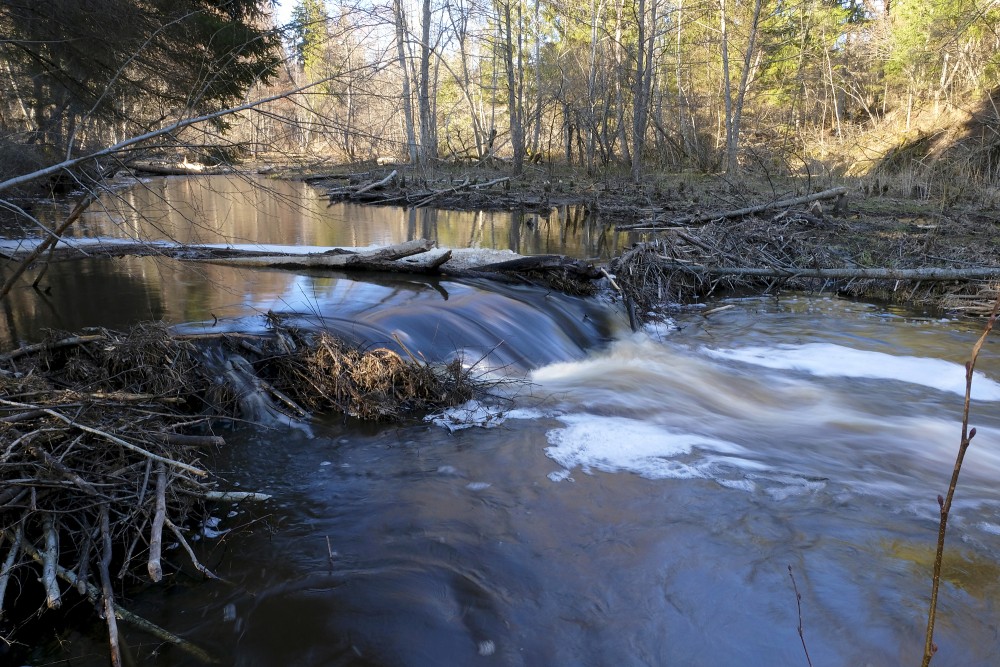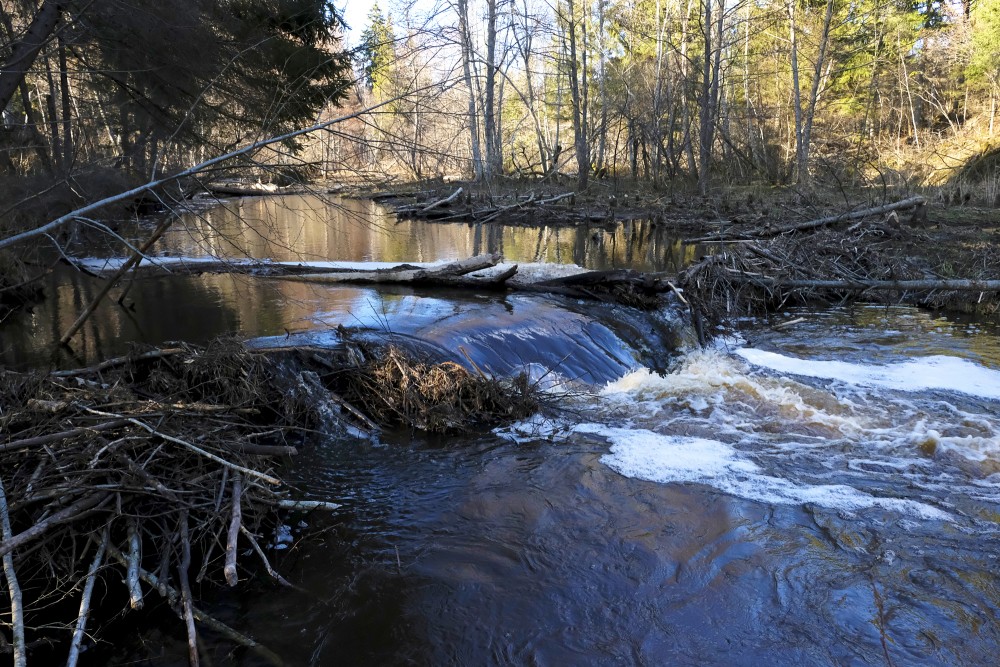Beaver dam
Beaver dams or beaver impoundments are dams built by beavers to provide ponds as protection against predators such as coyotes, wolves, and bears, and to provide easy access to food during winter. These buildings modify the natural environment in such a way that the overall ecosystem builds upon the change, making beavers a keystone species. Beavers work at night and are prolific builders, carrying mud and stones with their fore-paws and timber between their teeth.
Construction
A minimum water level of 0.6 to 0.9 metres (2.0 to 3.0 ft) is required to keep the underwater entrance to beaver lodges from being blocked by ice during the winter. In lakes, rivers and large streams with deep enough water, beavers may not build dams and instead live in bank burrows and lodges. If the water is not deep enough to keep beavers safe from predators and their lodge entrances ice-free, beavers build dams.
Beavers start construction by diverting the stream to lessen the water's flow pressure. Branches and logs are then driven into the mud of the stream bed to form a base. Then sticks, bark (from deciduous trees), rocks, mud, grass, leaves, masses of plants, and anything else available, are used to build the superstructure. Beavers can transport their own weight in material; they drag logs along mudslides and float them through canals to get them in place. Once the dam has flooded enough area to the proper depth to form a protective moat for the lodge (often covering many acres), beavers begin construction on the lodge.
Trees approaching a diameter of 90 centimetres (3.0 ft) may be used to construct a dam, although the average is 10 to 30 cm. The length depends on the diameter of the tree and the size of the beaver. There are recorded cases of beavers felling logs of as much 45 m tall and 115 cm in diameter. Logs of this size are not intended to be used as structural members of the dam, but rather the bark is used for food, and sometimes to get to upper branches. It takes a beaver about 20 minutes to cut down a 15 cm wide aspen, by gnawing a groove around the trunk in an hourglass shape. A beaver's jaws are powerful enough to cut a 1.5 cm sapling in one bite.
Maintenance work on the dam and lodges is often done in autumn.
Furthermore, if beavers are considered central place foragers, then their canals may be considered an extension of their "central place" far beyond the lodge, according to a 2004-2012 study that mapped beaver ponds and cut stumps.
It is claimed by some that by building dams, beavers are expressing tool use behaviour. However, the definition of tool use by animals is contentious.
Size
Beaver dams typically range in length from a few meters to about 100 metres (330 ft). Additionally, canals can be over 0.5 kilometres (1,600 ft) in length. The largest beaver dam known to exist is in Wood Buffalo National Park in Alberta, Canada and measures 2,790 feet (850 m) in length.
en.wikipedia.org

